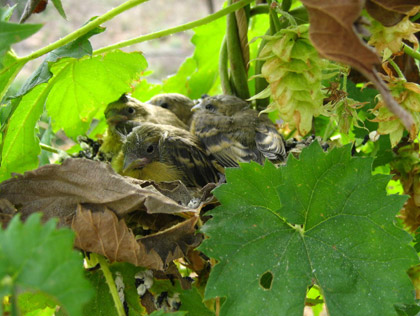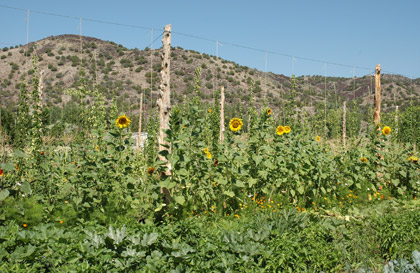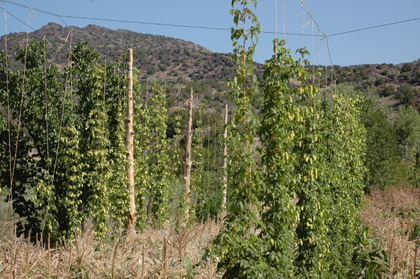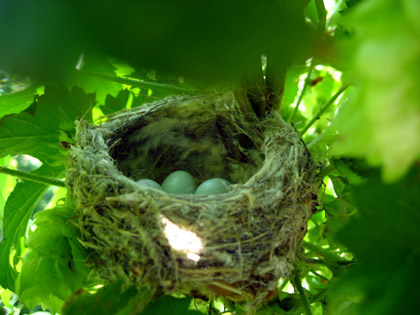
As you can see the nest with eggs built in organic hop plants in Northern New Mexico has turned into a nest with birds. In sending the photo, Todd Bates writes they are “thriving at the expense of a not so good plant – not a bad deal.”
The harvest is headed toward completion and they’ll be sending several varieties off to be tested. Last year the variety they are calling Rio came with a modest 3.2% alpha acids (meaning they don’t pack the punch of a brute such as Columbus at 14%-17%).
The photos below are from a few weeks ago to give you an idea of the setting – and the fact that the hops are one element in a big organic garden.
The trellis system is built on 12-foot junipers salvaged from a fire. Most of these are dwarf hop plants, which have some advantage for commercial producers. Summit is a newish, but becoming well known, sample of a dwarf hop.


